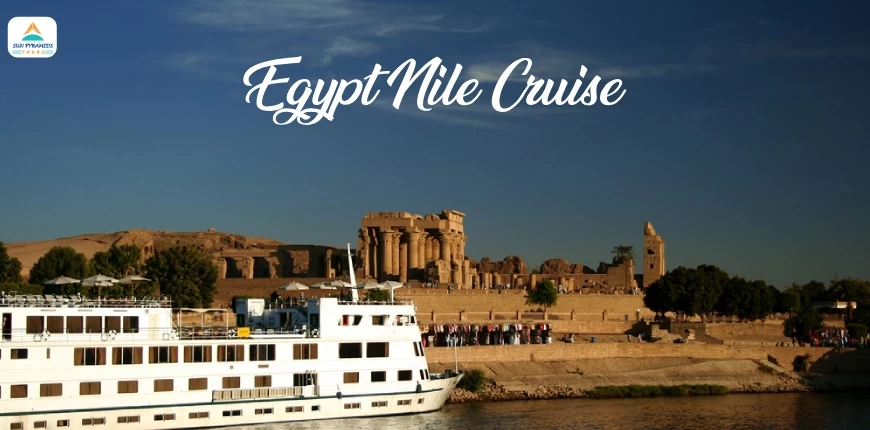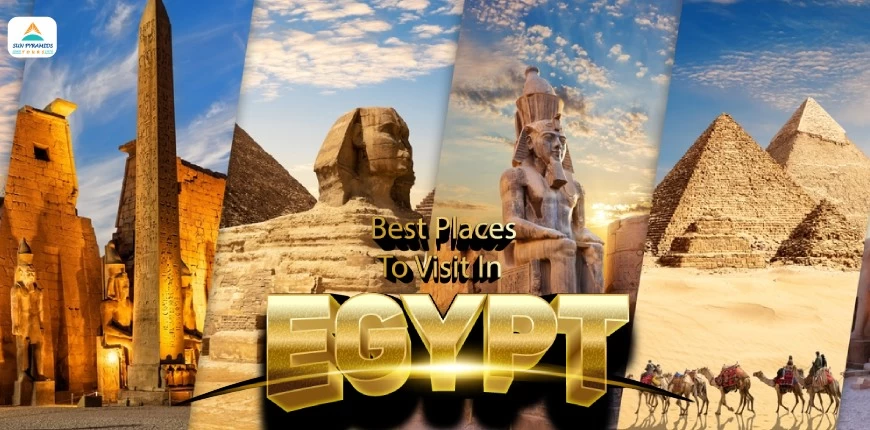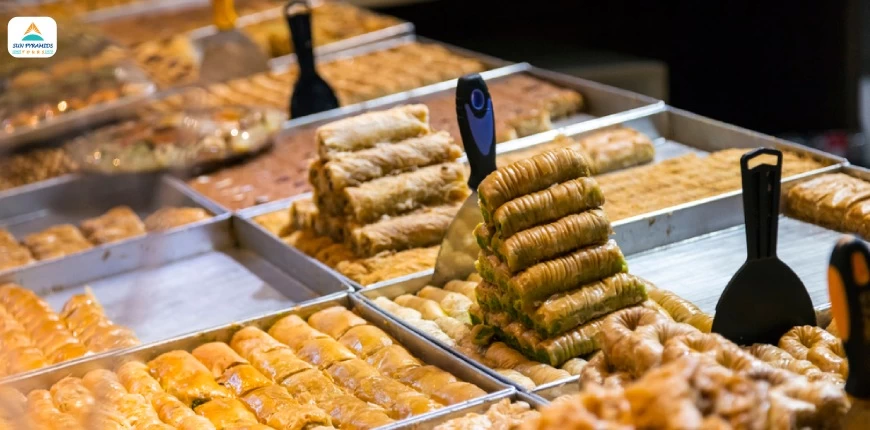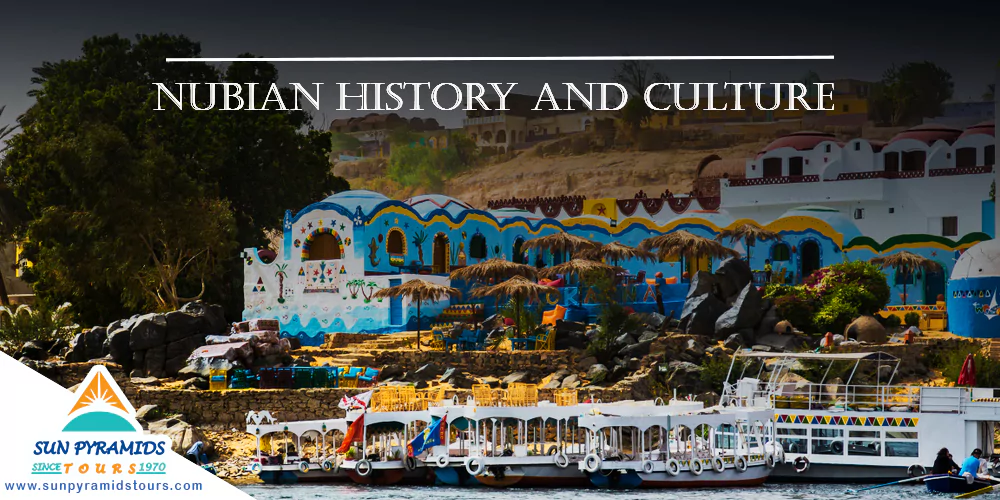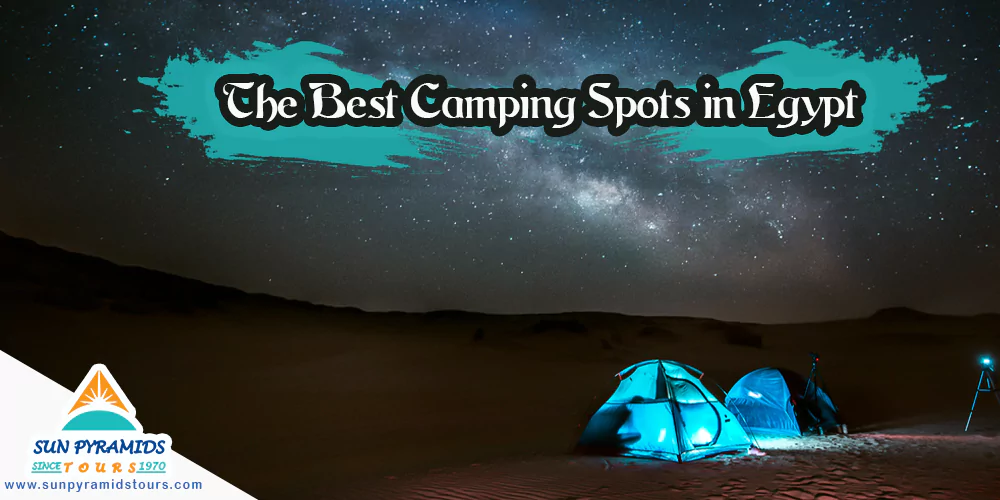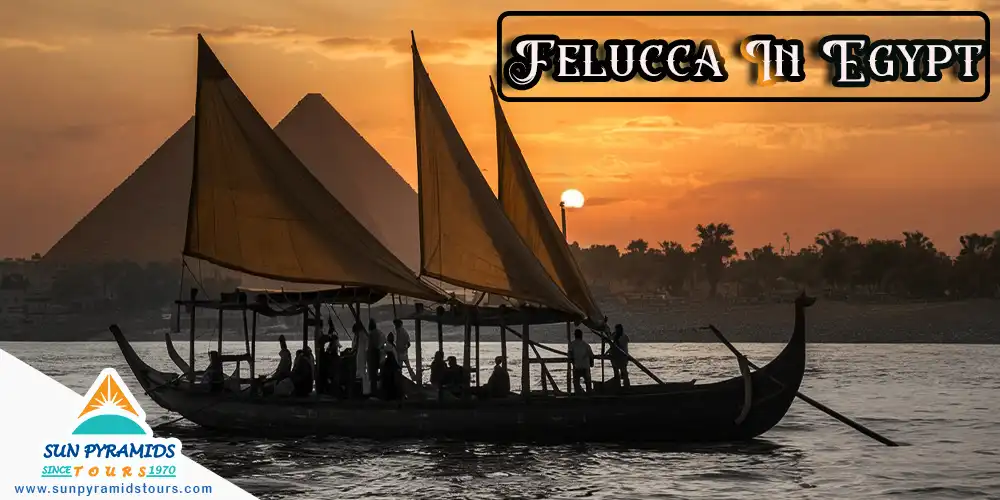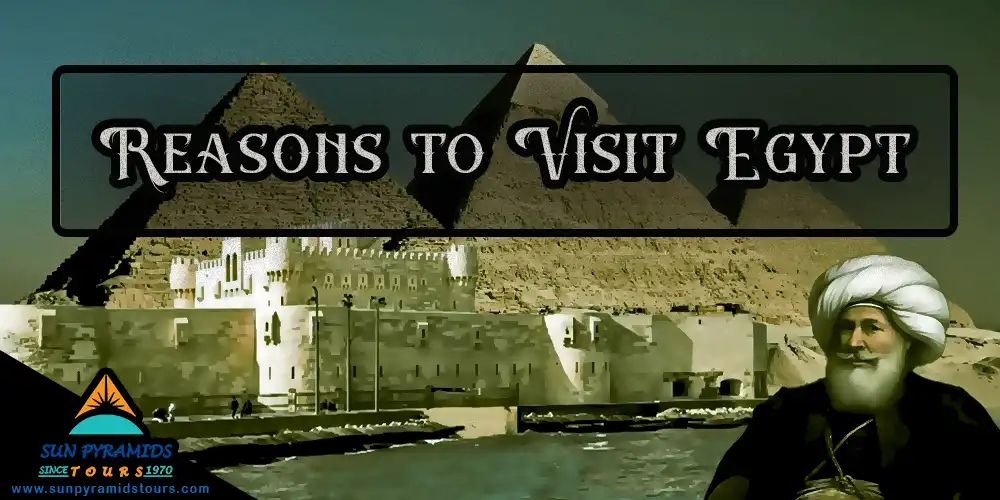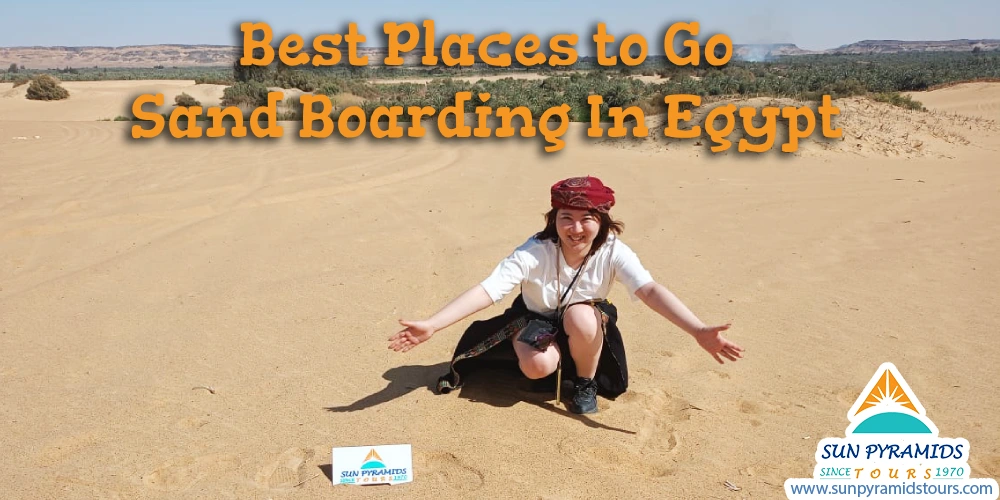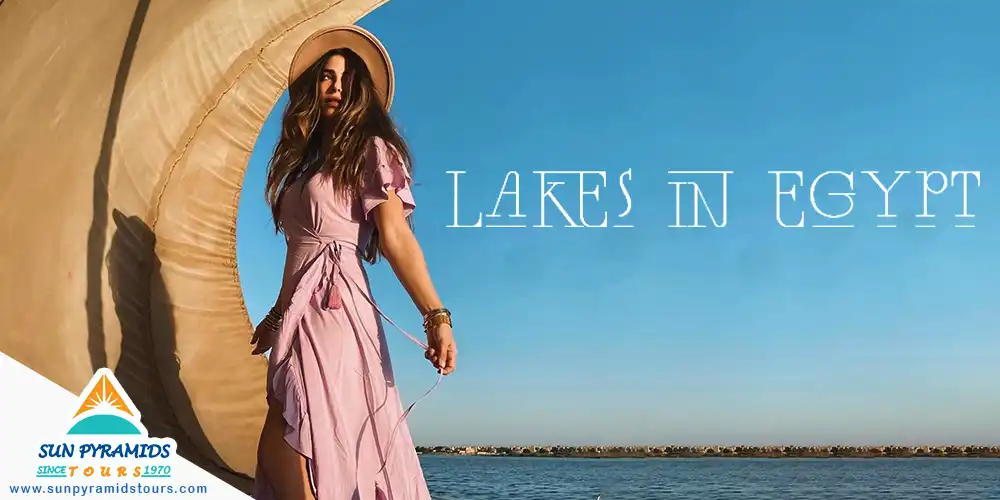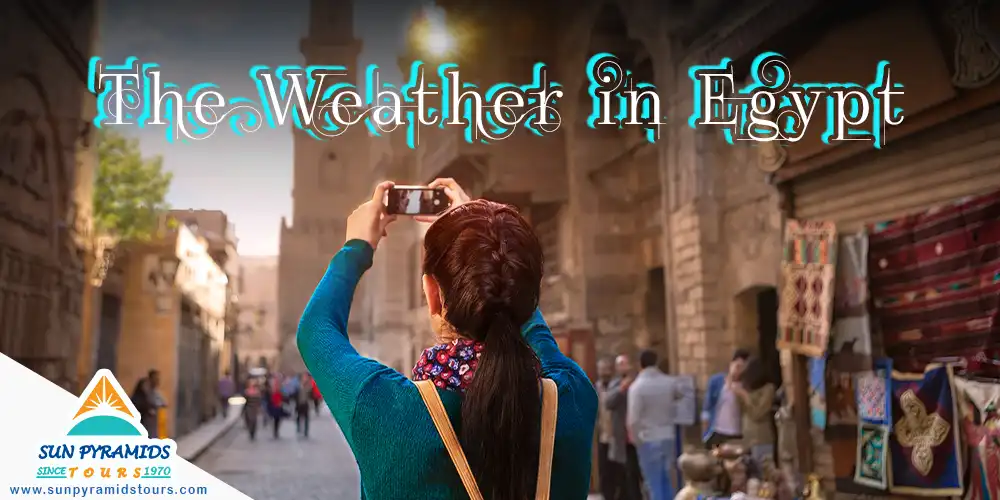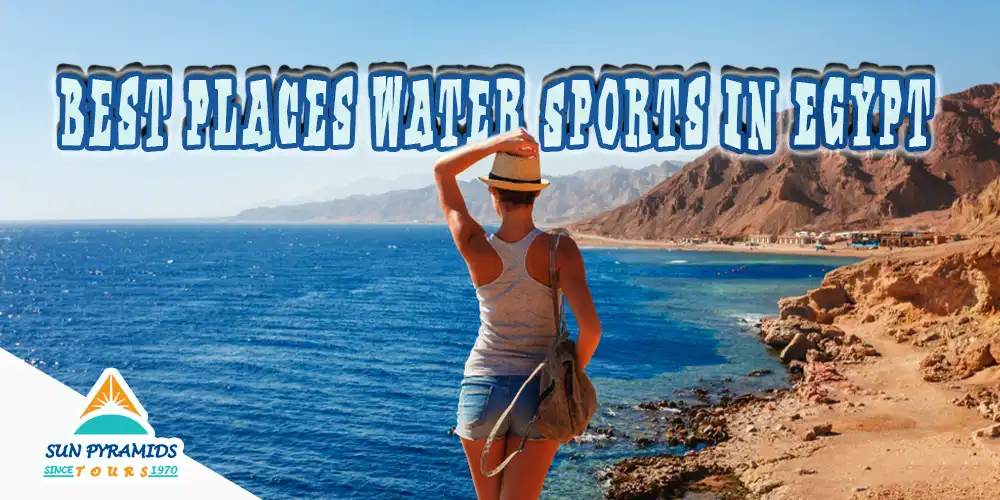17 Sept 2024, 08:17Discover the rich tapestry of Christian heritage in Egypt with Sun Pyramids Tours. From ancient monasteries to iconic churches, Egypt offers a unique blend of history, spirituality, and architectural marvels. Join us on a journey through these sacred sites and explore the profound legacy of Christianity in Egypt.
This article's primary goal is to provide every traveler with all the information and details about the many Christian monuments and monasteries in Egypt. All the information in this article was written by a group of very experienced tour guides, tour operators, and travel consultants who know everything.
The history of Christianity in Egypt dates very far back, as the holy family of Joseph, Mary, and baby Jesus crossed Egypt seeking refuge from the mad King Herod. Christianity spread quickly in Egypt after the fall of the Roman Empire and became the new official religion for 400 years from the 3rd AD to the 7th AD; Egypt was the center and hub for the Coptic culture. Across the route which the holy family took, a church was built. The Egyptians accepted the religion for its similarities with the ancient Egyptian dogma and concepts like the afterlife, resurrection, and even the symbol of Christianity. The cross was very similar to the Egyptian Ankh.
The old city of Cairo became the center of various churches and a true example of Christian architecture from the beginning of the 5th century till today, and it has had a vital role in the formation of Egypt. Here are the top 14 Christian monuments and monasteries in Egypt:
The Hanging Church
The Hanging Church, also known as Saint Virgin Mary's Coptic Orthodox Church, is a testament to the rich history and heritage of the Coptic era. This iconic church, one of the oldest in Egypt, dates back to the 3rd century and stands as a symbol of resilience and faith. Built atop a gatehouse on the southern wall of the Roman fortress of Babylon in Old Cairo, its unique architectural design creates the illusion of the nave being suspended, hence the name "Hanging Church."
Established as the official residence of the Coptic Orthodox Pope in 1047, the church also served as a center for religious ceremonies and elections. The architectural style is a stunning blend of Coptic, Byzantine, and early Islamic influences, featuring intricately carved wooden screens, marble columns, and gorgeous religious artwork.
Inside, visitors can admire a collection of ancient icons, elaborate frescoes, and ornate decorations that depict biblical scenes and Coptic Christian symbolism. The Hanging Church holds profound religious significance for the Coptic community and attracts numerous pilgrims and tourists who wish to delve into its historical and spiritual legacy.
Explore the Hanging Church and many other Christian Monuments and Monasteries with our guided tours at Sun Pyramids Tours.
Abu Serga Church
Abu Serga Church, also known as Saints Sergius and Bacchus Church, is a cornerstone of Coptic Christian heritage in Cairo. It is famously built over a crypt where the Holy Family is believed to have stayed during their flight into Egypt, seeking refuge from King Herod's persecution. Constructed in the 5th or possibly the 8th century, this ancient church is located within the historic Roman fortress of Babylon, close to the Hanging Church.
This sacred site honors two Roman officers, Sergius and Bacchus, who became martyrs after their Christian faith was discovered. The church's architectural style is a fascinating blend of early Christian, Byzantine, and Islamic influences, reflecting its long history and the various renovations it has undergone. Inside, visitors can admire intricate Coptic artwork, beautiful wooden screens, and ancient icons depicting religious scenes.
Abu Serga holds a special place in the hearts of Coptic Christians and serves as a pilgrimage site for those seeking a deep spiritual connection and understanding of the Holy Family's journey. Exploring this church offers a profound glimpse into the early days of Christianity in Egypt.
Discover the sacred secrets of Abu Serga Church and many other significant Christianity in Egypt monuments with our expert-guided tours at Sun Pyramids Tours.
The Church of Saint George
The Church of Saint George, a remarkable Greek Orthodox church in Cairo, is renowned for its stunning architecture and deep historical roots. Originally built in the 10th century by Athanasius, the 20th Orthodox bishop of Alexandria, the church was tragically destroyed by a massive fire. A new church was subsequently constructed between 1904 and 1909 atop the ruins of an ancient Roman tower at the exact location.
Dedicated to Saint George, a Palestinian conscript in the Roman army who was executed in 303 AD by Emperor Diocletian for practicing Christianity, the Church of Saint George stands as a testament to Egypt's diverse Christian heritage. The church's architectural design is notable for its brilliance, combining elements of Coptic and Byzantine styles. Inside, the church houses exquisite Coptic artwork, ancient icons, and religious artifacts that illustrate the history and traditions of the Coptic Orthodox Church.
Over the centuries, the Church of Saint George has undergone numerous renovations and restorations, preserving its historical and religious legacy. Today, it remains a vital pilgrimage site and a place of worship for Coptic Christians, offering a unique blend of history and spirituality.
Explore the rich heritage of the Church of Saint George and other Christian Monuments and Monasteries with Sun Pyramids Tours, and immerse yourself in Egypt's profound Christian history.
Saint Catherine Monastery
Nestled at the foot of Mount Sinai, the historic Saint Catherine Monastery is a beacon of ancient spirituality and religious heritage. This Greek Orthodox monastery, also known as the Monastery of the Transfiguration, is one of the world's oldest continuously operating Christian monasteries and a UNESCO World Heritage site.
Constructed in 527 AD by Byzantine Emperor Justinian I, the monastery was built around the site believed to be where Moses encountered the burning bush. It was dedicated to Saint Catherine of Alexandria, a 3rd-century martyr who was executed for her Christian faith after converting many to Christianity, including members of her father's following.
The monastery's library is a treasure trove of ancient manuscripts and religious texts, boasting a collection of 4,500 manuscripts and codices. Among these is the Syriac Sinaiticus, a manuscript that predates the Codex Sinaiticus and is essential for understanding the New Testament's history.
Saint Catherine Monastery is one of the most significant Christian Monuments and Monasteries in Egypt. Explore this sacred site with our expert guides and immerse yourself in the rich history and spirituality that it holds.
Monastery of Saint Anthony
The Monastery of Saint Anthony, nestled in the Eastern Desert, is considered the oldest monastery in the world. Located within an oasis at the front of Khelsm Mountain overlooking the Red Sea near Hurghada, it is believed to be situated where St. Anthony once lived as a monk in a cave.
Founded in 356 AD by Saint Anthony's followers, it is not only one of the world's oldest monasteries but also a vital center of monastic life.
This historic monastery is filled with numerous chapels, churches, and other constructions, including a bakery. The library holds more than 1,700 documents, preserving a rich collection of ancient texts and manuscripts. Among its treasures are old paintings dating back to the 7th, 8th, and 13th centuries, offering a glimpse into the artistic heritage of early Christianity in Egypt.
Explore the Monastery of Saint Anthony's ancient churches, hermit cells, and stunning desert landscapes with Sun Pyramids Tours. This remarkable site provides a profound connection to the roots of Christian monasticism and the enduring legacy of Christianity in Egypt. Book your tour today and delve into the history and spirituality of this sacred place.
Monastery of Saint Paul
The Monastery of Saint Paul, also known as "Deir Mar Boulos," is a Coptic Orthodox monastery built in the 5th century and dedicated to Saint Paul the Anchorite. Located in Egypt's Eastern Desert near the Red Sea Mountains, about 155 km (96 mi) southeast of Cairo, the monastery was constructed in the shape of a fortress to protect it from continuous raids. Saint Paul lived alone in a cave for more than 90 years, where he became a hermit.
In AD 343, the 90-year-old Anthony searched for Paul, and they became friends until Paul's death. Saint Paul the Anchorite is considered one of the first Christian hermits, leading an ascetic and solitary life that inspired many.
The monastery complex consists of several churches, chapels, cells for monks, and other structures, many of which have undergone renovations and expansions throughout the centuries. The architecture reflects a blend of Coptic, Byzantine, and early Christian styles.
Discover the fascinating history and serene surroundings of the Monastery of Saint Paul on our tailored tours with Sun Pyramids Tours. Explore the rich legacy of this ancient site and connect with the spiritual traditions that have shaped Christian Monuments and Monasteries throughout the centuries.
Wadi el-Natroun
Wadi el-Natroun, also known as Scetis, is one of the remaining Christian monastic centers located about 62 miles from Cairo. In ancient Egypt, it was significant for its abundant carbonated sodium, which was essential for the mummification process. The Romans also valued the area for its silica, which they used to create glass. However, this valley served another purpose as a refuge for Christians fleeing Roman persecution.
Once filled with monasteries, many fell victim to the effects of time, climate, and Bedouin raids. Today, four monasteries remain:
The Monastery of El-Suryan,
The Monastery of Abu Makar,
The Monastery of Baramus,
and The Monastery of Anba Bishoy.
These monasteries offer a fascinating glimpse into early Christian monastic life and traditions.
Explore the timeless beauty of Wadi el-Natroun with our in-depth tours and experience the spiritual and historical significance of these Christian Monuments and Monasteries.
Abu Mena Church
The Abu Mena Church, a UNESCO World Heritage site, is a significant Christian pilgrimage center established in the late 3rd century AD. Located 50 km (31 mi) southwest of Alexandria, the complex was dedicated to Saint Menas, a Roman soldier who converted to Christianity and became a revered figure in Egyptian culture.
Despite the passage of time, significant buildings like the Great Basilica remain prominent, showcasing the site's historical and archaeological importance. The church and monastery were built to honor Saint Menas and became known for their unique architectural grandeur and religious significance, attracting pilgrims seeking healing and blessings.
Discover the fascinating ruins and rich history of Abu Mena with Sun Pyramids Tours and explore more Christian Monuments and Monasteries in Egypt.
The Monastery of St. Simon the Tanner
The Monastery of St. Simon the Tanner, also known as the Cave Church, is a breathtaking marvel nestled in the Mokattam Hills of Cairo. This monumental site was carved into the hills and named after the Coptic saint Simon, renowned for moving the Moqattam Mountain in 979 AD to demonstrate his faith.
The monastery is more than just a religious site; it serves as an educational center, kindergarten, and school for deaf students. Known as the Cave Cathedral or the Monastery of St. Samaan, it stands as one of the largest churches in the Middle East, capable of accommodating up to 20,000 worshippers.
The church's interior is enchanting, with vibrant murals and religious paintings adorning the walls, seamlessly integrating into the natural cave formation. This unique structure is a symbol of resilience and faith, offering a spiritual experience unlike any other.
Join Sun Pyramids Tours to explore this extraordinary site and learn more about Christianity in Egypt.
Saint Mark's Coptic Orthodox Cathedral
Saint Mark's Coptic Orthodox Cathedral in Alexandria holds a venerable position as the historical seat of the Pope of Alexandria and the head of the Coptic Orthodox Church. It was initially founded by Saint Mark, the Evangelist and author of the second Gospel, in 60 AD. Saint Mark, who is considered the founder of the Church of Alexandria and the first Bishop of Alexandria, built the first church here and converted many to Christianity during his seven years in the city.
After his death, he was buried beneath the church he established. The current structure of the Cathedral has been destroyed and rebuilt multiple times, each iteration enhancing its grandeur and spiritual significance. Today, it stands as a monumental testament to Coptic Christian heritage, featuring grand architecture that reflects its deep historical roots.
Experience the spiritual ambiance and historical depth of Christian Monuments and Monasteries with Sun Pyramids Tours. Join our guided tours to uncover the rich history and significance of this remarkable Cathedral.
The Heavenly Cathedral of Sharm El Sheikh
The Heavenly Cathedral of Sharm El Sheikh, completed in 2010, is a modern architectural marvel renowned for its breathtaking beauty and serene atmosphere. It took ten years to construct, with the exterior exuding simplicity while the interior showcases an extravagant display of artistry.
A team of 19 talented individuals dedicated two years to creating intricate frescoes and murals adorning the walls, depicting Biblical scenes such as The Creation and Exodus. The ceiling features St. John's vision of the Apocalypse, adding to the spiritual ambiance.
Located in Haj el Nour, between Naama Bay and the Old Market, the Cathedral has gained a reputation as one of the world's finest and most beautiful churches.
Discover the beauty and spiritual significance of Christian Monuments and Monasteries with Sun Pyramids Tours. Join our tours to explore the Heavenly Cathedral and experience its unparalleled grandeur.
The Red Monastery
The Red Monastery, which was constructed between 500 and 525 AD on the outskirts of Sohag, is a revered Coptic monastery and one of Egypt's most famous Christian sites. Known for its distinctive red brick architecture, the monastery is named after the red, burnt bricks used in its exterior construction. It stands as a neighbor to the White Monastery, both built around the same time. The Red Monastery is dedicated to Saint Pishoy (Paisios), a revered figure in Coptic Christianity, and its structure mainly dates back to the 5th century.
The interior of the Red Monastery is a visual feast adorned with vibrant and well-preserved frescoes and intricate Coptic artwork depicting biblical scenes, saints, angels, and geometric designs. The colossal walls of the monastery resemble ancient Egyptian temples surrounded by cavetto moldings. After falling into disrepair, the American Research Center in Egypt initiated a restoration project in 2003, reviving its historical and artistic beauty. The Red Monastery remains inhabited by monks today and continues to be a site of spiritual and historical significance.
Explore the rich history and artistic beauty of Christian Monuments and Monasteries with Sun Pyramids Tours. Join our tours to discover the stunning Red Monastery and immerse yourself in Egypt's Christian heritage.
Saint Barbara Church Complex
The Coptic Orthodox Church of St. Barbara is one of the magical churches found in Coptic Cairo and is one of the revered Coptic Orthodox parishes. It's an ancient structure with origins tracing back to the 5th or 6th century AD. It's located on the eastern part of the Babylon Fortress, just east of the Church of Abu Serga and north of the Coptic Museum.
Between the years 1072 and 1073 AD, the church was fully restored, and many relics of Saint Barbara were housed in her sanctuary found in the church. Throughout its history, it suffered damages, notably fires in the 12th century, and underwent various renovations, with the most recent extensive renovation occurring between 1910 and 1922. The church houses numerous precious items, some of which are now in the nearby Coptic Museum. The architecture of the church follows a basilican structure with a tripartite sanctuary, resembling the design of Abu Serga nearby.
The church complex includes a convent and a school built by the renowned architect Ramses Wissa Wassef. The layout consists of an entrance, narthex, nave, aisles, and three sanctuaries, with the middle one dedicated to St. Barbara. Notable features include:
Marble columns separating the nave and aisles.
A semi-circular choir.
A medieval ambo dating back to around 1300.
The southern aisle houses several icons depicting various religious scenes, including representations of the Virgin Mary, Jesus as a child, Jesus entering Jerusalem, and Christ's baptism.
Explore the timeless charm and spiritual significance of Christian Monuments and Monasteries with Sun Pyramids Tours. On our guided tours, you will also discover the history and beauty of the Saint Barbara Church Complex.
Monastery Of St. Simeon
The Monastery of Saint Simeon, located near Aswan, is a magnificent 7th-century marvel dedicated to Anba Hedra, a local saint who turned to monasticism on his wedding day. The monastery evolved into its current form in the 10th century when it was rededicated to St. Simeon.
Close to the monastery is a collection of beautiful attractions, which include the Tombs of the Nobles, Kitchener's Island, Elephantine Island, and more marvelous hidden gems filled with many epic historical tales. Exploring the Monastery of St. Simeon offers stunning views of the Nile and the surrounding desert, providing a unique blend of historical significance and serene beauty.
Discover the rich history and serene beauty of Christian Monuments and Monasteries with Sun Pyramids Tours. On our expertly guided tours, explore the Monastery of St. Simeon and other significant Christian sites.
Exploring Christian Monuments and Monasteries and More
Embark on a spiritual journey through Egypt's Christian heritage with Sun Pyramids Tours. Our expert guides will take you through the most significant Christian monuments and monasteries, offering unparalleled insights into their history and significance. Egypt is a land where Christianity flourished, and its legacy can be seen in the numerous historic churches, monasteries, and religious sites scattered across the country. From the ancient Coptic churches of Cairo to the remote monasteries in the Eastern and Western Deserts, each site tells a unique story of faith, resilience, and devotion.
Across Egypt, especially the streets of Cairo, there are a number of incredible Christian monuments and monasteries that every traveler can still discover today by booking one of our Egypt vacation packages. Experience the awe-inspiring architecture of the Hanging Church, the serene beauty of the Monastery of St. Anthony, and the spiritual significance of Abu Serga Church. Walk in the footsteps of saints and martyrs and gain a deeper understanding of the profound legacy of Christianity in Egypt.
Book your tour today with Sun Pyramids Tours and explore the profound legacy of Christianity in Egypt. Let us guide you through this rich heritage, ensuring an unforgettable journey through time and faith. Take the chance to book with us now and delve into the heart of Egypt's Christian history.
Why do I book with Sun Pyramids Tours?
1) Expertise and Experience: Sun Pyramids Tours has 53 years of experience in the travel and tourism industry.
2) Customized Itineraries: Sun Pyramids Tours offers tailored itineraries to suit your preferences. Whether you're interested in historical sites, cultural immersion, or adventure activities, we can design a tour that matches your interests.
3) Local Connections and Insider Access: Sun Pyramids Tours can provide you with unique opportunities and insider access to attractions and experiences that may not be easily accessible to independent travelers.
4) Hassle-Free Planning: Sun Pyramids Tours can take the stress out of planning your trip. We handle all the logistics, including accommodations, transportation, and guided tours, at competitive prices… Relax and enjoy your vacation without worrying about the details.
5) Customer Satisfaction: Sun Pyramids Tours prides itself on providing excellent customer service and ensuring customer satisfaction. They strive to meet and exceed your expectations, making your trip enjoyable and memorable. Add trip advisor reviews, Facebook page reviews, etc.
6) Safety and Security: Sun Pyramids Tours prioritizes the safety and security of their guests. We work with trusted partners, adhere to safety guidelines, and provide support throughout your journey to ensure a safe and comfortable travel experience.
Read more 
